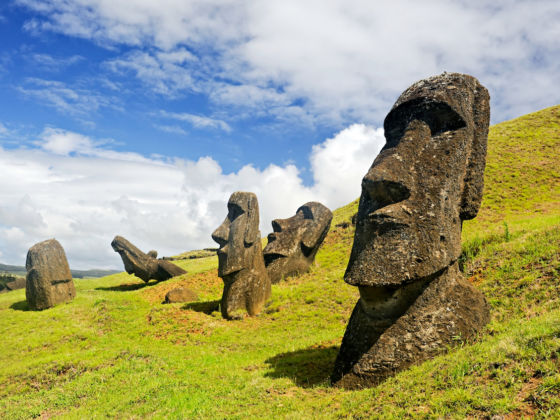

Easter Island, or Rapa Nui as it's called locally, is tiny but well-known.
You've likely seen the giant stone heads (moai) erected on a series of stone platforms (ahu) around the island, which are often visited by tourists. It's assumed that they were erected for religious and cultural purposes, though they were later all knocked down both by forces of nature and by the Rapa Nui themselves. In more recent times, they've been erected in several key places on the island, such as Tongariki -- where you can watch the sunrise -- and at Anakena Beach. Many more are still waiting, half-unearthed at the Rano Raraku quarry.
Competing theories about the origin of the Rapa Nui people persisted into recent times, but it is now definitively known that the Rapa Nui are originally Polynesian. Apart from traditional dance and music -- usually prepared for tourists -- you can also hike, bike, snorkel, scuba dive, go horseback riding, fish or surf while on the island, in addition to diving deep into thousands of years of island history.